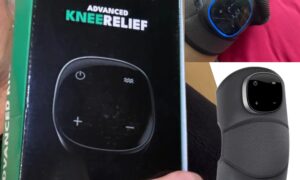Sometimes, you may feel like human interaction is the only way to reach your child and make them understand. There are also many other ways that education technology can support disabled children to make sure they’re progressing in a safe and effective way too. For example, Nao Robot, helps children on the autism spectrum learn and grow using robotic technology and can be tailored to meet each individual child’s needs and learning goals.
Keep reading to find out more about robotic teaching aids for autistic students.
What is Autism?
Autism, or Asperger Syndrome, at one time, referred to simply as “childhood schizophrenia” was only recently universally recognized in the early 1950s. Many teachers have difficulties with students who are affected by autism. Teachers may just not be equipped for teaching these special needs students. But does that mean that technology should be shoved down their throats?
Autism is a developmental disorder that can have many different symptoms. The most common symptom of autism is impaired social interactions, with difficulties in communication and interacting with people present in varying degrees for those with autism.
Can Autistic Children benefit from Robotics?
“The future with autism has been infiltrated by robotics, and it will make it safer for autistic children.” This was an effective evaluation summary by a college instructor. Robots in education can help autistic students. They keep the students entertained and give them a built-in toy.
Robots are being casually integrated into the education of such students, with benefits for both; however, there are some questions about why and how this would improve their learning. There is evidence to show that robotics programs can provide students with social support, have positive impacts on their communication skills, and especially increase the children’s learning ability.
Benefits of a Robotics Program for Autistic Children
Research suggests that autism is one of the fastest-growing developmental disorders in the world. The prevalence rate for children on the autism spectrum has increased tremendously over the last 34 years, with ten times more children being diagnosed today than in 2000. Robots have been studied as a potential recourse in aiding autistic children since its establishment. There have also been studying results showing that a robotics program improved speech therapeutic ability and helped discovery capability due to stimulation effects on cortical neuron activity. In the past few years, robotics programs have appeared in schools nationwide to help students with autism spectrum disorder (ASD) and behavioral challenges.
How to get started with a Robotic Program for Autistic Children?
If you are someone that wants to get started with these programs, it is important to remember that the most important factor is when you will start. The key goal to help in this endeavor would be taking the process of teaching individual children out of it and converting it into a more fruitful, learning achievement-driven experience.
Thriver-friendly teacher robots provide equal attention and accurate feedback for all students, no matter their background or cognitive ability. Through learning through play, these children are able to integrate the freedom that autonomy offers into the classroom setting.



































